A company with 129 years of history, Murakami Lumber is a leading Japanese supplier of logs, lumber and pre-cut wooden products, chiefly catering to B2B clients in the housing construction sector.
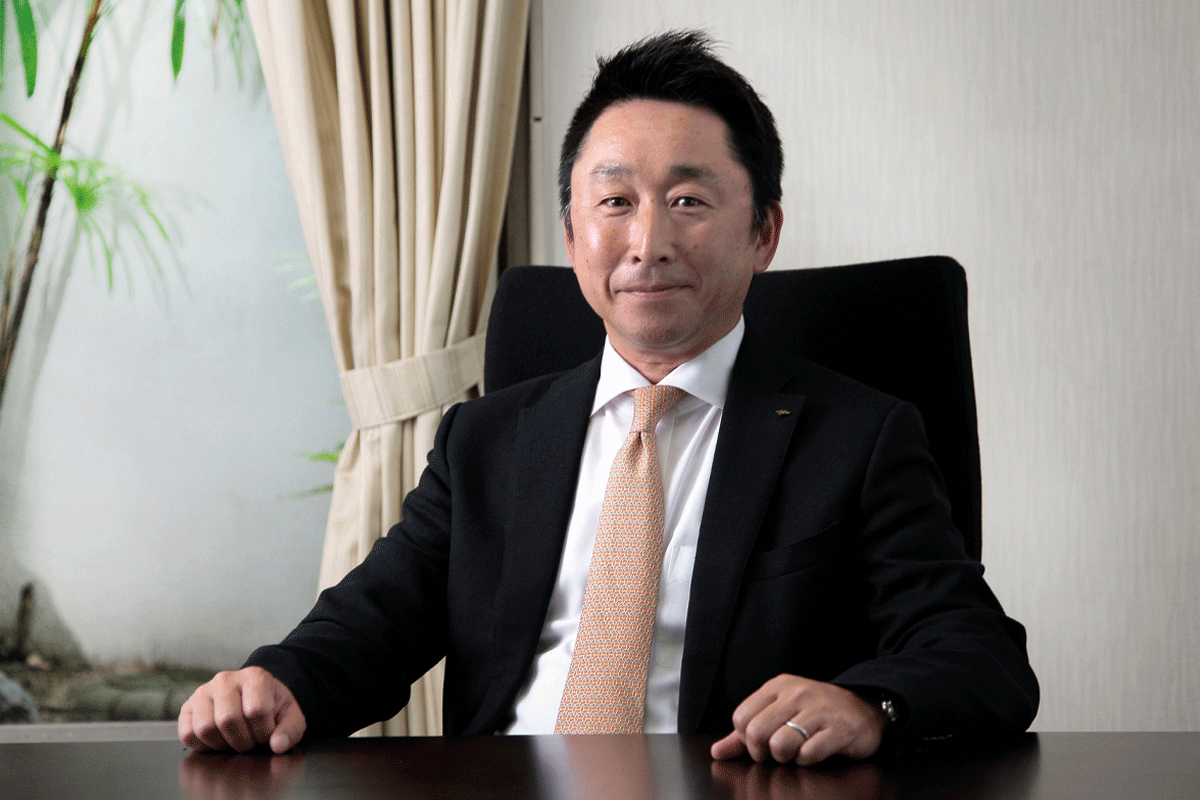
What do you see to be the main needs and challenges facing Japan’s construction market going forward?
One of the key challenges confronting Japan's construction market relates to the aging of houses. As you mentioned, the increase in land tax upon house removal has led many homeowners to leave their houses untreated, resulting in numerous vacant and dilapidated properties. It is imperative for the government to address this issue proactively. To meet this demand, the housing and construction industry has redirected its attention toward renovating these aging houses, ensuring they remain habitable for many more decades to come.
Our company possesses an in-house pre-cutting factory, providing us with a distinct advantage in managing pre-cutting operations efficiently. Our primary objective is to bolster our new construction orders, which necessitates the removal of old houses. This strategic move would pave the way for an influx of new construction projects. We are particularly excited about the recent legislation in Japan that promotes the use of lumber. By spearheading this emerging trend, we anticipate a surge in the demand for lumber in upcoming construction projects.
We are interested in learning about what makes Murakami different when it comes to how you process your lumber. You mentioned that there is a lot of government support for the use of lumber in new construction and new housing projects, and you also mentioned the strict need to clear away abandoned and very old houses to make room for new houses. Why should someone choose Murakami as a partner in these construction activities? What are the core competencies that set you and the materials that you procure apart from your competitors?
Although we may not claim a dominant competitive advantage, Murakami offers invaluable expertise in lumber processing for construction purposes. While pre-cutting is typically a localized process, our company excels in providing large-sized materials, crucial for construction projects, within a 80km radius of our factory. By maintaining a strong local presence, we ensure the efficient and timely supply of materials to meet the specific needs of our clients. Moreover, our commitment to excellence extends nationwide as we distribute lumber throughout the country.
However, what truly sets us apart lies in our profound knowledge and understanding of Japanese construction methods. In recent times, there has been a notable surge of interest from other Asian countries in adopting the highly regarded "made in Japan" approach to construction, particularly the axis method. Embracing this opportunity, we have embarked on an ambitious project to export this traditional construction method to other Asian markets. Through this endeavor, we aim to foster innovation, facilitate cultural exchange, and extend the influence of Japanese construction techniques to a global audience.
You just mentioned that people in other Asian countries have an appreciation for the ‘made in Japan’ quality of processed wood products. Can you provide us with a more detailed explanation of this export project?
We have observed a growing appreciation among individuals in other Asian countries for the unparalleled quality associated with 'made in Japan' processed wood products. In line with our strategy, we have chosen not to establish factories in local overseas markets. Instead, we focus on leveraging Japan's expertise in processing materials and transporting the finished products abroad. This approach enables us to maintain strict quality control while working closely with trusted local partners who possess market-specific knowledge and networks.
Our target customers for this project are affluent individuals who value the distinctive Japanese construction method utilizing the axis. This revered practice, prominently utilized in the construction of centuries-old temples, boasts exceptional strength and earthquake resistance, achieved without the use of nails. The project was initiated approximately three to four years ago in China, with ambitious plans to introduce this remarkable construction method. Unfortunately, the outbreak of the Covid-19 pandemic imposed temporary delays on our progress. However, I'm delighted to announce that this year, we will successfully complete our first building project in Vietnam, showcasing the impeccable craftsmanship and unwavering commitment to excellence that define Japanese construction practices.
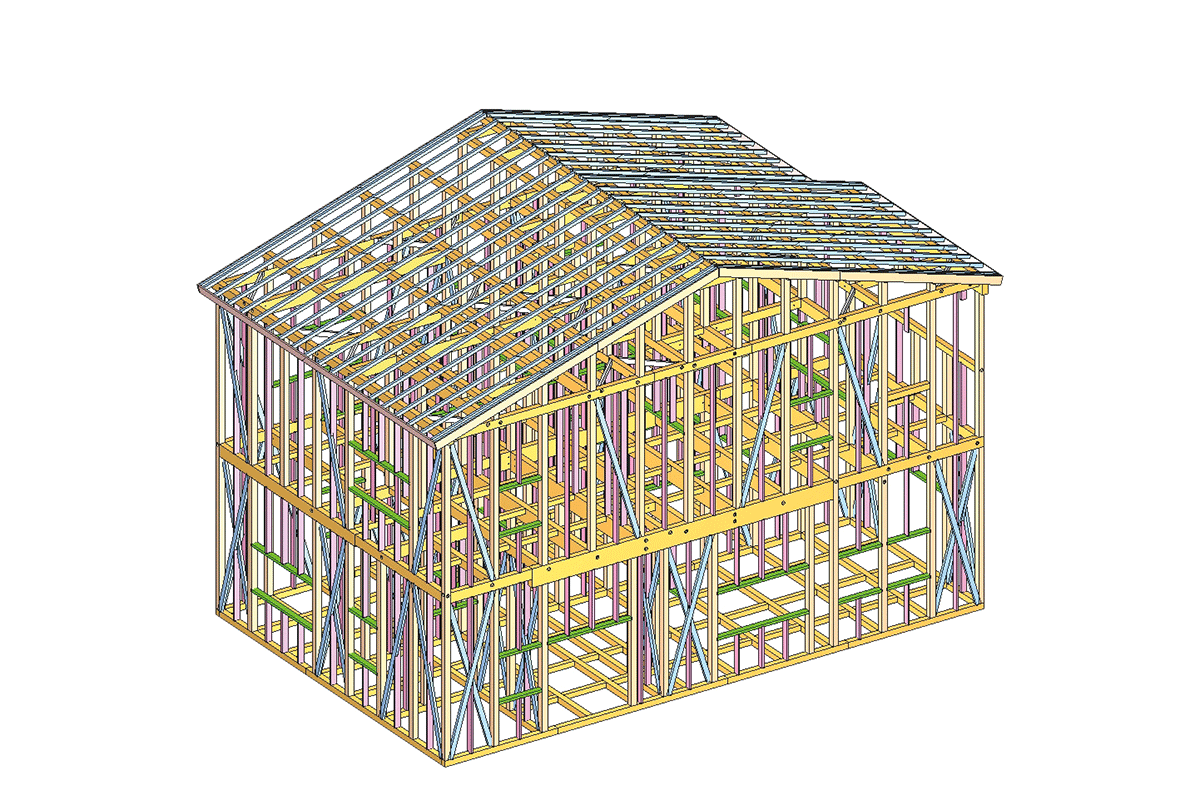
CAD design
The longevity of companies such as yourselves is really impressive, as is the longevity of these kinds of construction techniques and technologies. However, right now is a scary time perhaps for many firms in Japan, due to Japan’s aging population and the aging of the experienced engineers. Often it is the case, especially in smaller companies, that a lot of expertise is concentrated in a few elderly individuals. Therefore, there is a big challenge when it comes to technological inheritance. Also, fewer young people are interested in this type of career. Can you tell us about your approach to the challenges associated with Japan’s aging population?
Undoubtedly, the commendable longevity of our industry peers and the enduring legacy of these construction techniques and technologies evoke admiration. Nevertheless, the present era poses an unsettling prospect for numerous Japanese firms due to the aging population and the progressive retirement of seasoned engineers. This predicament is particularly notable in smaller companies, where a wealth of expertise often resides in the hands of only a handful of individuals, thereby presenting a considerable challenge in terms of technical succession. Furthermore, there exists a noticeable decline in the interest of younger generations to pursue careers in our field.
To navigate these challenges adeptly, our company has steadfastly focused on automating our machinery and advancing the adoption of unmanned operations. Concurrently, we have actively explored the integration of cutting-edge AI technologies, including Computer-Aided Design (CAD). In the realm of construction practices, we have wholeheartedly embraced the panel method, a paradigm that deviates from the conventional approach of transporting materials to the construction site for assembly. Instead, we opt to perform assembly operations at our state-of-the-art factory, subsequently delivering fully assembled panels to the construction site. By mitigating the effects of population decline, which inevitably impacts the number of available engineers and craftsmen, we seek to facilitate and streamline construction processes while catering to individuals with varying levels of expertise.
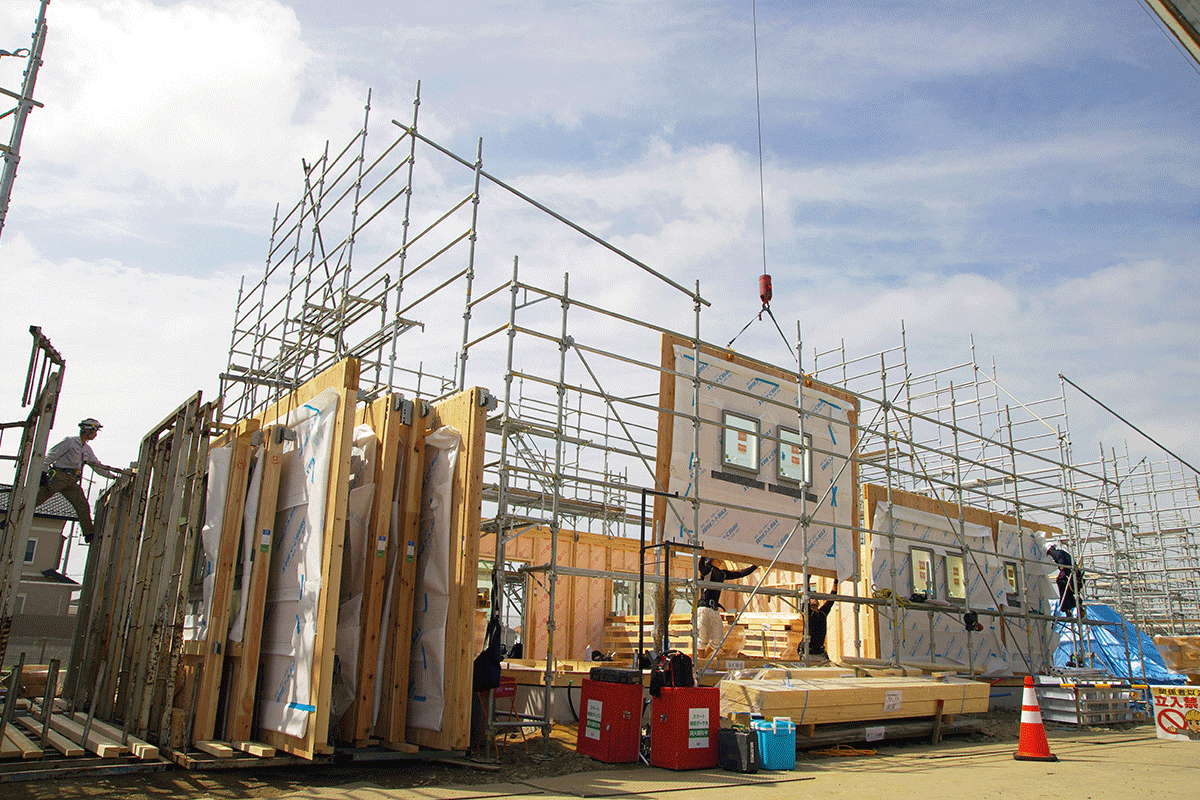
Panel method
There is a lot to be said about wood as a sustainable construction material, but it is very important for the sourcing of the lumber to take place in a sustainable way. This is a major social issue in western Canada where I am from. You often hear taglines such as “save the old growth.” There are protected forests that have a lot of significance for the local indigenous populations and they play a very important ecological role. We know that your company does not cut down trees, but we are interested in your diligence process. How do you make sure that the trees that you source from your suppliers around the world are done so in an appropriate way?
In terms of our sales, through our partnership with WFP (Western Forest Products), a titan of a company in the forestry industry, we have the largest sales of old growth in Japan. However, it is a complex matter to address as it conflicts with sustainable development goals and sustainable sourcing policies. As a company, we have a preference for large-sized natural wood. Nevertheless, we are currently navigating through negotiations with the British Columbian government, which has expressed a reluctance to permit tree cutting. Although we are yet to reach a definitive conclusion, we are actively engaged in the negotiation process while also trying to uphold the highest standards of environmental responsibility throughout our operations.
What do you believe to be the biggest strength of your wood processed products as housing material?
The exceptional sustainability of our wood processed products lies in their recyclability. By employing reclaimed wood, we can ensure an everlasting utilization of this valuable resource. Our longstanding association with old growth exemplifies our commitment to this material, although both supply and demand for old growth have significantly diminished in recent times. Recognizing the ecological implications, we refrain from advocating further deforestation. In terms of finished goods, wood materials offer remarkable sustainability as they can be endlessly repurposed. The ability to reuse wood in housing and construction projects underscores its favorable characteristics. In the forthcoming Osaka Expo, we are poised to construct numerous buildings using wood, which will be dismantled after six months. By adopting wood, we can subsequently employ these materials in future construction endeavors, thus highlighting the inherent sustainability of wood materials.
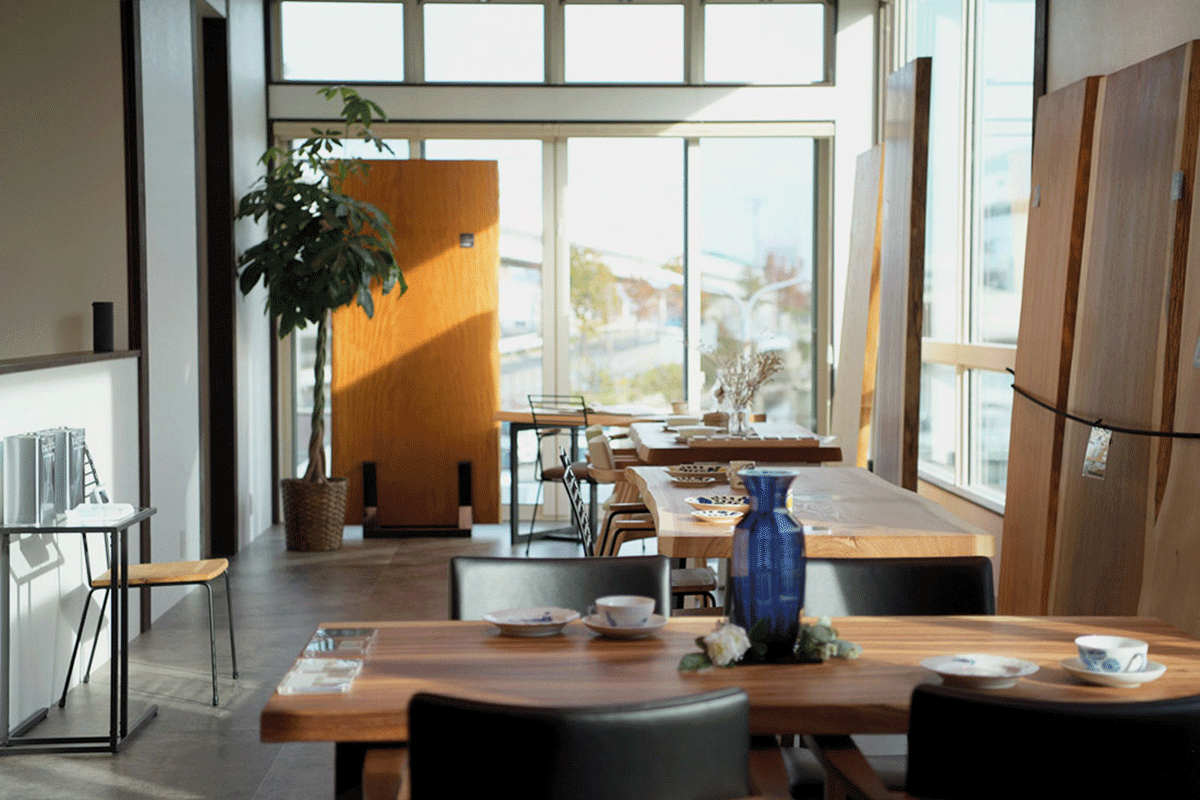
Murakami Lumber showroom
We know that recently you entered into some very fun B2C focused and more consumer-oriented markets. There is your M’s brand single board that can be used for tabletops and other interior products. There is also your Ikonih which are unpainted wooden toys. Could you tell us more about what motivated you to enter these consumer-facing markets and about these new business fields?
Our vision revolves around conveying the allure and excellence of wooden materials to people worldwide, and in turn enriching their lives through our service. While our B2B endeavors have been instrumental, we recognized the need to extend our reach beyond that realm to truly achieve our mission. This drove us to venture into the B2C market, enabling us to not only satisfy consumer demands but also foster the growth of the industry as a whole. On a personal level, during my time as a sales representative, I encountered a customer who had constructed a wooden house and displayed great attention to detail in selecting the materials. However, to my surprise, they opted for inexpensive furniture from a popular retailer. When I inquired about this decision, they revealed that their financial resources were depleted due to the house loan. This experience deeply resonated with me, as I desired to provide them with higher-quality wooden furnishings. Thus, it became one of the catalysts for initiating our B2C venture. We even incorporated the option of financing wooden tables and furniture into our housing loans, allowing homeowners to conveniently pay over an extended period.
I’d like to know a little more about the current focus and direction of your international business and strategy. Now that your project in Vietnam is complete, where are you looking towards next? Do you have any upcoming projects planned in Vietnam or any other countries around the world?
In terms of our B2C endeavors, we recognize that the Japanese market is still evolving and holds immense potential. Therefore, our primary objective is to effectively communicate the unparalleled excellence of wooden materials to the Japanese audience. We are particularly keen on expanding the sales of our wooden toys under our brand name "Ikonih," which is "Hinoki" (Japanese Cypress) spelled backward. We had a collaboration with a Japanese airline for a limited run of a set of wooden plane toys which was an instant success, selling out promptly. Currently, we are formulating our next strategic moves within the domestic market.
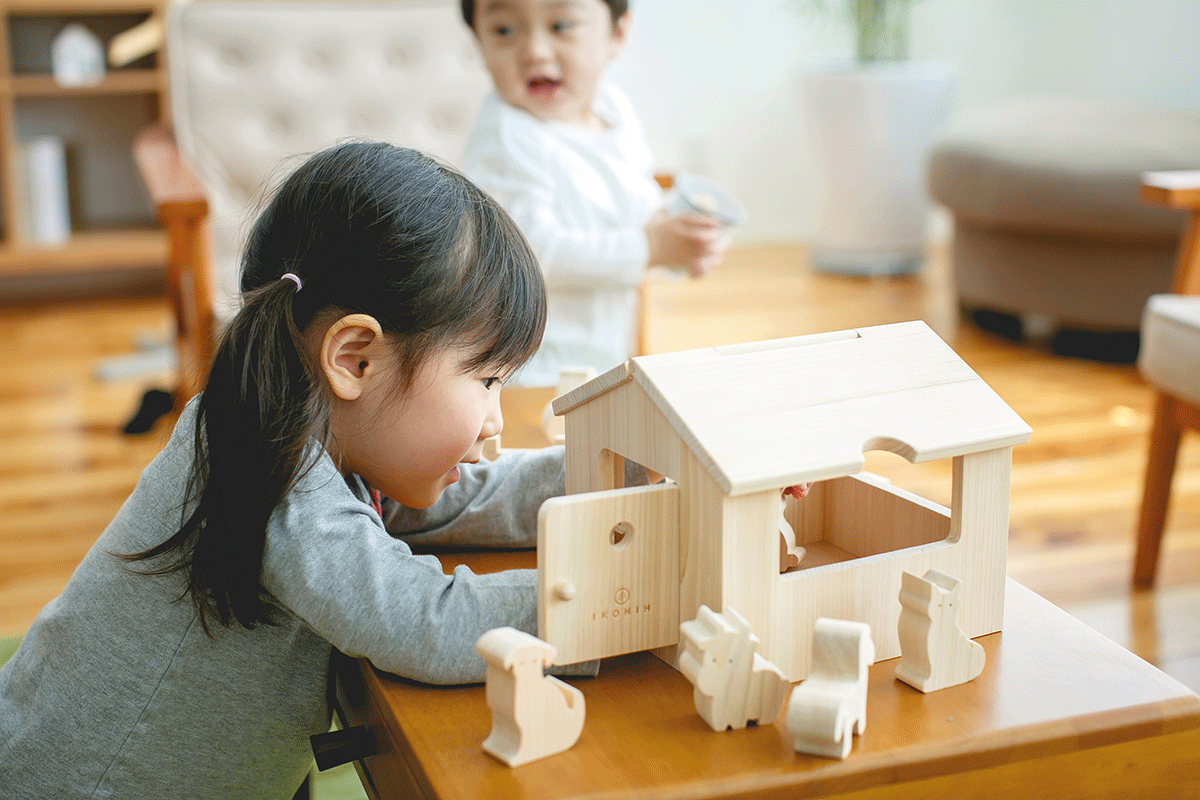
Ikonih children’s wooden toys
Regarding our international projects, Vietnam remains a key focus for us. One compelling reason is the country's rapid population growth, projected to reach 100 million within the next few years. With the average age in Vietnam being in the 30s, there is tremendous growth potential in the market. Moreover, Vietnam's economic advancement and the local population's appreciation for Japanese culture and products make it an ideal destination for our expansion efforts. As aforementioned, we are on the verge of completing our first building project there, and we are excited to announce that we will soon finalize an agreement for an additional 15 buildings in the city of Da Lat next month.
You mentioned earlier that you have been working for the company for 30 years. Imagine that we come back in exactly five years and interview you all over again. What dreams and goals would you like to have achieved for the company by then that you would like to tell us about in that new interview?
One of my aspirations is to see every employee of our company express genuine happiness and satisfaction in their work. At the core of our company's philosophy lies the belief that the well-being and contentment of our employees are paramount. It is my personal dream to relentlessly pursue the happiness of our team members, creating an environment where they feel fulfilled and motivated. By fostering a workplace that values and prioritizes employees’ happiness, I strongly believe that Murakami Lumber can achieve extraordinary goals together.
0 COMMENTS